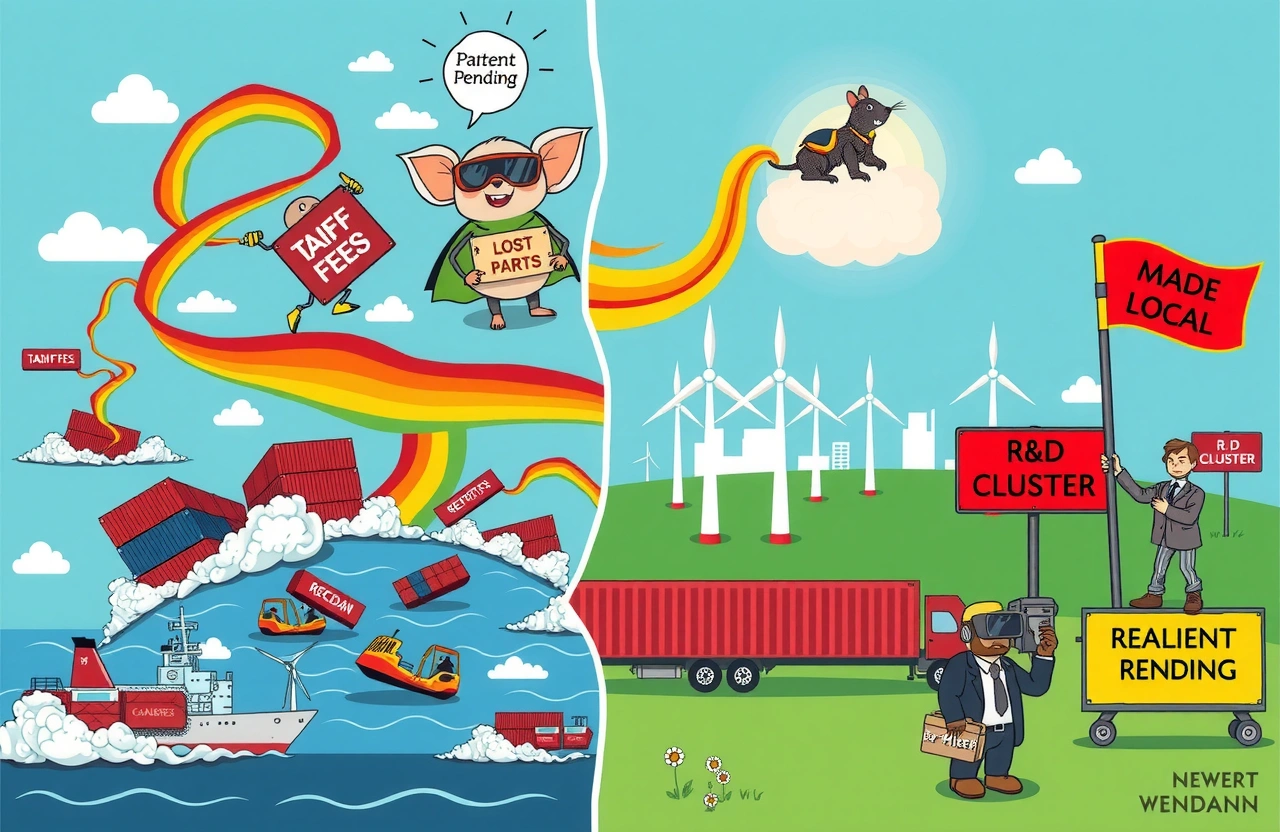The Perfect Storm Igniting Industrial Revival
Global supply chains face unprecedented stress, yet from this disruption emerges an unexpected renaissance. Barely three years after pandemic-induced standstills brought factories to their knees, we’re witnessing a powerful manufacturing resurgence that’s reshaping global commerce. Geopolitical tensions, shipping chaos, and material shortages forced corporations to confront vulnerabilities in their far-flung production models. This awakening sparked what industry leaders now call “The Great Recalibration” – a decisive pivot toward resilient, localized manufacturing strategies.
Consider the numbers: U.S. manufacturing construction spending surged 76% between 2022-2023, while Southeast Asian factories reported record foreign investment. Behind each statistic lies boardrooms making strategic course corrections once deemed improbable. Companies that once chased rock-bottom labor costs now prioritize proximity, flexibility, and redundancy. This structural realignment carries profound implications for workers, consumers, and the competitive landscape across continents.
Geopolitical Tremors Rewriting Production Maps
Trade wars and regional conflicts exposed critical risks in extended supply chains. When tariffs fluctuated unpredictably and shipping lanes became political bargaining chips, the true cost of offshore manufacturing became impossible to ignore.
Reshoring Accelerates
For the first time in decades, North American and European companies are actively bringing production home. Three key drivers fuel this shift:
– Tariff avoidance: Eliminating import duties through domestic manufacturing
– Speed-to-market: Local facilities respond faster to demand fluctuations
– Shipping reliability: Reducing reliance on container ships facing 200% cost increases
The Reshoring Initiative reports a record 360,000 jobs returned to U.S. soil in 2023 alone. Major corporations like GE Appliances invested $500 million in Kentucky factories, while German automakers are expanding Eastern European plants.
Nearshoring Hotspots Emerge
For capital-intensive operations requiring proximity rather than total domestic presence, strategic nearshoring creates a hybrid solution. The most significant beneficiaries:
– Mexico: Auto part exports to U.S. grew 15% annually since 2020
– Vietnam: Electronics manufacturing receiving $32 billion FDI in 2022
– Eastern Europe: Polish industrial zones absorbed $9.7 billion in EU relocation funds
Technology Acceleration Driving Production Transformation
The manufacturing resurgence isn’t simply geographic reshuffling. Revolutionary technologies enable productivity levels rendering labor arbitrage less relevant.
The Automation Surge
Modern factories increasingly resemble tech campuses as robotics and AI transform workflows:
– Collaborative robots now perform assembly at 60% lower cost per task
– Machine learning algorithms predict maintenance needs with 95% accuracy according to McKinsey studies
– Digital twin simulations slash prototype development from months to weeks
Supply Chain Tech Revolution
Real-time visibility solutions finally deliver on industry promises. Key innovations include:
– Blockchain tracing of materials from mine to factory
– Predictive analytics adjusting inventory before disruptions hit
– 5G-powered warehouses tracking shipments within centimeters
Siemens recently implemented AI-driven logistics at its Nanjing plant, reducing buffer stock by 30% while improving on-time delivery to 99.2%.
Workforce Evolution in the New Industrial Landscape
This renaissance demands new skill sets as factories grow smarter. Production lines need programmers alongside machinists, data scientists alongside quality inspectors.
Closing the Skills Gap
Successful manufacturers tackle labor challenges through:
– Partnerships with community colleges creating fast-track certification
– Upskilling programs like Ford’s Technician Appliance Program
– AR-assisted training reducing onboarding time by 40%
Apprenticeship registrations jumped 48% in advanced manufacturing fields during 2022-2023, signaling strong workforce adaptation.
Remote-Tech Specialists Emerge
A fascinating trend sees hybrid factory roles blending physical and digital expertise. Remote monitoring technicians might troubleshoot Boston machines from Phoenix control centers. Technicians more frequently monitor processes via augmented reality headsets while accessing real-time production dashboards.
Sector Spotlights: Where Growth Concentrates
The manufacturing resurgence shows clear industry hotspots with distinct opportunity profiles.
Semiconductors Finalize Frontiers
Silicon Valley’s literal interpretation of domestic manufacturing evolves rapidly:
– TSMC’s Arizona fab: $40 billion investment creating 4,500 jobs
– Intel Ohio campus: First new U.S. semiconductor site in decades
– European Chips Act: €43 billion EU subsidy pool attracting projects
Renewable Energy Components Boom
Green initiatives drive demand for domestically made components:
– Solar panel factories doubling U.S. capacity by 2025
– Wind turbine plants establishing in former automotive hubs
– Battery gigafactories expanding across Rust Belt states
Tesla’s Nevada facility achieved 50% production cost reduction through localized material sourcing and automated assembly lines.
Overcoming Material Hurdles
Supply chain improvements face raw material availability challenges even as factories rise.
Critical mineral access has become a national security priority across industrial nations. Recent breakthroughs include:
– Rare earth processing plants emerging outside China
– 3D printing reducing material waste by 90% compared to machining
– Urban mining initiatives reclaiming electronics components
This December, GM announced a partnership with recycled materials startup Circulor guaranteeing sustainable cobalt at 40% below market rates for its EV batteries.
Pathways for Business Adaptation
Companies navigating the manufacturing resurgence strategically position themselves through these approaches:
– Multicontinent footprinting: Strategically spreading facilities across regional hubs
– Tech assessment audits: Identifying automation-ready processes with highest ROI
– Supplier diversification scoring: Quarterly evaluation of material sourcing resilience
Don’t underestimate small-scale localization either. Makerbrane manufactures modular robotic systems in Detroit, demonstrating how nimble players thrive through:
– On-demand production runs avoiding large inventories
– 5-tier local supplier networks within Michigan
– Customization premiums replacing volume discounts
Regional specialization creates competitive advantages impossible to replicate remotely. Wisconsin now dominates commercial refrigeration manufacturing by clustering R&D, suppliers, and talent.
Business leaders must embrace this seismic industrial realignment not as a disruption but as an unprecedented growth catalyst. Every link in the production chain faces disruption: retool supply strategies immediately, invest in tomorrow’s workforce today, and integrate visibility technologies that turn vulnerability into competitive advantage. The factories rising amid our reimagined landscape represent more than buildings–they signal a fundamental recalibration of how the world makes things. What role will your organization play in this renaissance?



